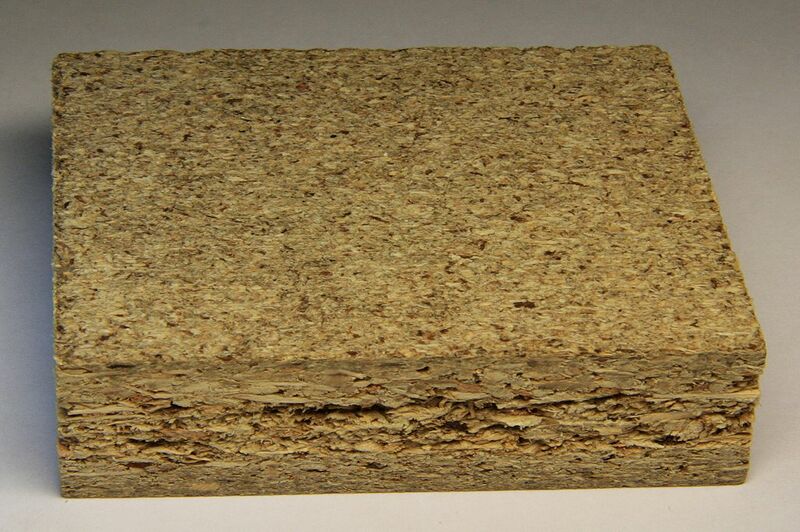Are you looking for instructions on how to fix water damaged particle board cabinets? Your search is over; you’ve found the right site.
Water damage is a risk to furniture built of a specific type of wood. In some cases, a simple at-home repair may be possible if the damage is minor enough.

The following are the answers to your concerns and questions.
List Of The Materials You’ll Need
- Sandpaper: medium-grit and finer grit
- Hairdryer (optional)
- Utility knife
- Wood filler
- Paint
Repairing Particle Board Cabinets
You can repair water damaged particle boards in your home by following the instructions provided.
Step #1. Start by determining when you should begin to act
If the core material expands, you may be able to fix a cabinet depending on the level of the swelling. As soon as the swelling has progressed, the material has begun to separate.
Maybe, mold has already started to grow. Replacing the affected particle board cabinet would be the best choice.
Step #2. Ensure that the wet area is completely dry
Natural drying takes a long time, so allow plenty of time for this step. Using a hairdryer, for example, can expedite the process if you’re pressed for time.
Direct the hairdryer’s nozzle to the damp area. Allow some time for the particle board to dry evenly before moving on.
Step #3. The raised area can be smoothed out with sandpaper
The dried particle board may be uneven. When you buff the particle board, the dried part shows.
You may now remove the damaged material. When removing a damaged particle board, use medium-grit sandpaper.
To finish the repair, use finer grit sandpaper. Buffing the areas smoothens the sheets.
Then you can finish with a waterproof coating to avoid the raised wet problem. If you used a waterproof coating, let it dry completely before moving on to the next step.
Step #4. With a utility knife, remove the damaged sections of the particle board
The damaged particle board will be removed once your waterproofed particle board has dried, or your material has been sanded down. Cut up the swollen and damaged portions with a knife.
Remove any pieces that have turned to powder or become moist. Again, allow ample time for the board to dry before proceeding.
Use a vacuum to clear any powdery residue from the particle board. The particle material might be damaged from the inside out if anything remains.
Step #5. Fill the holes with wood filler
Get yourself a can of wood filler. Mix it up according to the label’s instructions.
Apply the wood filler to the holes you’ve made with a knife or scraper. Scrape away any extra filler from the particle board to have a smooth finish.
Additional Tips
If the issue is minor, one of the following three approaches might help:
Strip away the laminate and sand
- Using heat, if necessary, take the door down and thoroughly dry it out.
- A heat gun or syringe filled with lacquer thinnercan be used to soften the adhesive, and a sharp knife can be used to cut through the adhesive bonds. To fix a minor problem, you don’t need to remove the entire laminate, but you must if the swelling is widespread.
- Use a pad sander and 100-grit sandpaper to deflate the swollen particleboard and make it flat.
- Wait five to ten minutes before applying the contact cement to the flattened particleboard and the back of the laminate.
- Clamp the laminate in place with C-clamps after being pressed into place. Clamp it overnight.
Laminating cabinet doors made of particleboard
This method works best when the swelling is confined to the cabinet door’s back. Sand over any existing laminate after the door has been removed and dried thoroughly.
When the door’s backside is entirely flat, apply a new laminate sheet. Particleboard storage cabinets, which do not need to look as fine as kitchen cabinets, can easily be fixed with this simple modification.
This method also sums up what to do with water damaged cabinet door.
Sand the cabinet and apply a new coat of paint
Alternatively, painting a water damaged particle board cabinet is another option. Adding paint to a laminated cabinet can be a decorative highlight.
In addition to the primer, the ideal paint to use is a water- or solvent-based enamel with a high gloss that is easy to clean. It can be brushed on or sprayed on.
You can take down the doors and heat them if necessary to dry out the particleboard core. Contact cement any lifting laminate, then sand the entire door flat with a pad sander.
Remove sanding dust, apply primer and two coats of paint, and let dry for 24 hours before rehanging the doors.
When it comes to cabinets, let’s go all-in until it’s underneath; we also provide manuals on how to fix water damaged cabinet bottom.
Conclusion
This write-up demonstrates how to fix water damaged particle board cabinets. Particleboard’s susceptibility to moisture is a significant drawback.
Individual wood chips swell and separate from one another when exposed to water, whether from a flood, a plumbing accident, or even from high humidity. Whereas this property has served its purpose for a long time, it is critical that you take good care of it and know when to take action.
